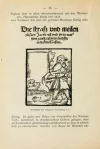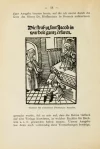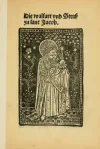PILGRIMSPLAZA
Active Member
DAS WALLFAHRTSBVCH DES HERMANNUS KÜNIG VON VACH UND DIE PILGERREISEN DER DEUTSCHEN NACH SANTIAGO DE COMPOSTELA. VON KONRÄD HÄBLER. STRASSBURG, 1899.
http://www.archive.org/stream/daswallfa ... t_djvu.txt - full text -
http://www.archive.org/stream/daswallfa ... 00haebuoft - filp book -
Nicht weit von dem heutigen Santiago de Compostela, da wo das Flüsschen Ulla in breiter Mündung sich in den Ozean ergiesst, lag zur Römerzeit die Stadt Iria Flavia. Ihr Name macht es wahrscheinlich, dass sie erst zur Zeit der flavischen Kaiser, vermuthlich unter Vespasian begründet, oder doch zum Rang einer Stadt erhoben worden ist.
Nachmals muss sie aber zu einem gewissen Ansehen gediehen sein, denn in der Zeit der spanischen Gothenkönige, vom 5. bis ins 7. Jahrhundert, war Iria der Sitz eines Bischofs, der abwechselnd den Metropoliten von Lugo oder von Tuy unterstand. Als dann die Sarazenen in raschem Anlaufe fast die ganze iberische Halbinsel sich unterwarfen, ist Iria, an der äussersten Nordgrenze ihres Herrschafts-gebietes gelegen, von Grund aus zerstört worden.
Bis heute ist auf derselben Stätte noch nicht wieder eine beträchtlichere Ansiedelung entstanden; nur als Name des Bischofssitzes ist Iria zu Beginn des 9. Jahrhunderts wieder aufgelebt, bis dessen Inhaber, die von Anfang an nicht mehr in den Ruinen der Stadt residiert haben können, auch den Namen gegen denjenigen von Santiago vertauscht haben.
Ich Hermannus künig ordens der mergenknecht
Hab gedieht diss buchelyn recht
Das dan heist sant Jacobs strass
Got wolle mich nymmer gesterben lass
Ich solt dan ewiglichen by im blieben
Als man schryb M. cccc. vnnd xcv ist ess geschryben
Vff den tag der heyligen frawen sant Annen
Gott wolle vns behüten vor den ewigen banden Amen.
Diese Verse waren insofern eine werthvolle Entdeckung, als man bisher nur zwei datierte Abdrucke von dem Pilgerbuche des Hermann Künig kannte, deren einer zu Nürnberg bei Jobst Gutknecht im Jahre i520, der andere zu Leipzig, ohne Angabe des Druckers im Jahre 1521 gedruckt ist.
http://en.wikipedia.org/wiki/Iria_Flavia
Iria Flavia or simply Iria in Galicia, northwestern Spain, was a Celtiberian port, the main seat of the Caporos, on the road between Braga and Astorga. The Romans rebuilt the road as via XVIII or Via Nova and refounded the Celtiberian port as Iria Flavia ("Flavian Iria") to compliment Vespasian. Iria was the seat of a sixth-century Christian bishopric that shared its seat with Compostela, then moved there in 1095. The modern city on the site of Iria Flava is Padrón. [50 km from Cee as the crow flies - gb]
The followers of Priscillian were deeply embedded in the culture of Iberia's northwest. To restore catholic orthodoxy in the Visigothic marches that were recovered from the Kingdom of the Suevi in a series of campaigns during the years leading up to 585, nine dioceses were established in Galicia, including Iria Flavia, mentioned in the document Parroquial suevo (ca 572–582); the Parroquial divides the region into dioceses and marks the first definitive integration of this zone in the monarchy of the Visigoths, who had been catholicized from Arianism in 587 (Quiroga and Lovell 1999).
No commercial or political rationale for siting a bishop at Iria Flavia seems to present itself, though excavations have identified a cult sanctuary dating to the second half of the sixth century (Quiroga and Lovelle 1999). The relics that were identified with Saint James the Greater and which were transferred to Compostela may originally have determined the location of the diocese at Iria, to control the already sanctified site. The possibility remains open that the relics venerated first at Iria and then at Compostela are those of Priscillian himself.
Under Adaulfus II the city was destroyed by Norse pirates, and bishop and chapter took refuge behind the strong walls of Compostela. Soon they petitioned Ordoño II of León and Pope Nicholas I to permit them (c. 860 CE) to transfer the see from Iria to Compostela, near the sepulchre and church of St James (founded c. 835 CE). Both pope and king consented on condition, however, that the honour of the see should be divided between the two places. From the second half of the ninth century the bishops of this see are known as Irienses or Sancti Jacobi, even ecclesiae apostolicae sancti Jacobi—though no apostolic succession was possible—and finally as Compostellani (Catholic Encyclopedia).
About the year 1000 Diego Gelmírez, bishop of Compostela, rebuilt the former cathedral church, Santa Maria Adina, which had been destroyed by Almanzor.
As the legend of Saint James the Greater having proselytized in Hispania spread, Iria Flavia came to be accounted the first site of his preaching.
http://en.wikipedia.org/wiki/Cee,_Galicia [11 km from Fisterra as the crow flies - gb] Cee is a municipality of Spain in the Province of A Coruña, in the autonomous community of Galicia.
More:
- Re: Pilgrimage to Heresy: Don't Believe Everything They Tell You - by Priscillian on April 20th, 2008, 12:58 pm on miscellaneous-topics/topic3554.html?hilit=cee#p21602 - I note that the Diocese was transferred from Iria Flavia to Santiago with the creation of the post of Archbishop: Diego Gelmirez.
- Re: Pilgrimage to Heresy: Don't Believe Everything They Tell You - by PILGRIMSPLAZA on May 4th, 2008, 9:17 am on miscellaneous-topics/topic3554.html?hilit=cee#p22011 - Does anyone know if Cée near Fisterra was a station on this transfer? Or that it played another role (seat?) in this part of the Santiago story?
- Re: Pilgrimage to Heresy: Don't Believe Everything They Tell You - by Priscillian on May 6th, 2008, 12:43 pm on miscellaneous-topics/topic3554.html?hilit=cee#p22084 - Cee is much closer to Fisterra than it is to Iria Flavia, and the journey to "the ends of the earth" is much older than the "pilgrimage" if we consider the latter to be only connected with the St. James´"myth".
- Klaus Herbers writes in his Jakobsweg on page 65: Hermann Künig von Vach unterscheidet für deutsche Pilger eine Oberstraβe, die von Einsiedeln nach Südwesten bis ins Rhôhetal un dann durch Südfrankreich bis zu den Pyrenäen aud den camino francés fúhrte, und eine Niederstraβe, auf denen der Pilger ab den Pyrenäen über Tours, Paris und das heutige Belgien schlieβlich nach Aachen zurückkehren konnte. (vgl. Karte, S. 66f.).
See Jakobsweg: Geschichte und Kultur einer Pilgerfahrt on http://books.google.nl/books?id=v_2bMvR ... &ct=result and http://pilgrim.peterrobins.co.uk/itiner ... uenig.html > More details > spreadsheet with old and new placenames and > Google map (130 placemarks).
http://www.archive.org/stream/daswallfa ... t_djvu.txt - full text -
http://www.archive.org/stream/daswallfa ... 00haebuoft - filp book -
Nicht weit von dem heutigen Santiago de Compostela, da wo das Flüsschen Ulla in breiter Mündung sich in den Ozean ergiesst, lag zur Römerzeit die Stadt Iria Flavia. Ihr Name macht es wahrscheinlich, dass sie erst zur Zeit der flavischen Kaiser, vermuthlich unter Vespasian begründet, oder doch zum Rang einer Stadt erhoben worden ist.
Nachmals muss sie aber zu einem gewissen Ansehen gediehen sein, denn in der Zeit der spanischen Gothenkönige, vom 5. bis ins 7. Jahrhundert, war Iria der Sitz eines Bischofs, der abwechselnd den Metropoliten von Lugo oder von Tuy unterstand. Als dann die Sarazenen in raschem Anlaufe fast die ganze iberische Halbinsel sich unterwarfen, ist Iria, an der äussersten Nordgrenze ihres Herrschafts-gebietes gelegen, von Grund aus zerstört worden.
Bis heute ist auf derselben Stätte noch nicht wieder eine beträchtlichere Ansiedelung entstanden; nur als Name des Bischofssitzes ist Iria zu Beginn des 9. Jahrhunderts wieder aufgelebt, bis dessen Inhaber, die von Anfang an nicht mehr in den Ruinen der Stadt residiert haben können, auch den Namen gegen denjenigen von Santiago vertauscht haben.
Ich Hermannus künig ordens der mergenknecht
Hab gedieht diss buchelyn recht
Das dan heist sant Jacobs strass
Got wolle mich nymmer gesterben lass
Ich solt dan ewiglichen by im blieben
Als man schryb M. cccc. vnnd xcv ist ess geschryben
Vff den tag der heyligen frawen sant Annen
Gott wolle vns behüten vor den ewigen banden Amen.
Diese Verse waren insofern eine werthvolle Entdeckung, als man bisher nur zwei datierte Abdrucke von dem Pilgerbuche des Hermann Künig kannte, deren einer zu Nürnberg bei Jobst Gutknecht im Jahre i520, der andere zu Leipzig, ohne Angabe des Druckers im Jahre 1521 gedruckt ist.
http://en.wikipedia.org/wiki/Iria_Flavia
Iria Flavia or simply Iria in Galicia, northwestern Spain, was a Celtiberian port, the main seat of the Caporos, on the road between Braga and Astorga. The Romans rebuilt the road as via XVIII or Via Nova and refounded the Celtiberian port as Iria Flavia ("Flavian Iria") to compliment Vespasian. Iria was the seat of a sixth-century Christian bishopric that shared its seat with Compostela, then moved there in 1095. The modern city on the site of Iria Flava is Padrón. [50 km from Cee as the crow flies - gb]
The followers of Priscillian were deeply embedded in the culture of Iberia's northwest. To restore catholic orthodoxy in the Visigothic marches that were recovered from the Kingdom of the Suevi in a series of campaigns during the years leading up to 585, nine dioceses were established in Galicia, including Iria Flavia, mentioned in the document Parroquial suevo (ca 572–582); the Parroquial divides the region into dioceses and marks the first definitive integration of this zone in the monarchy of the Visigoths, who had been catholicized from Arianism in 587 (Quiroga and Lovell 1999).
No commercial or political rationale for siting a bishop at Iria Flavia seems to present itself, though excavations have identified a cult sanctuary dating to the second half of the sixth century (Quiroga and Lovelle 1999). The relics that were identified with Saint James the Greater and which were transferred to Compostela may originally have determined the location of the diocese at Iria, to control the already sanctified site. The possibility remains open that the relics venerated first at Iria and then at Compostela are those of Priscillian himself.
Under Adaulfus II the city was destroyed by Norse pirates, and bishop and chapter took refuge behind the strong walls of Compostela. Soon they petitioned Ordoño II of León and Pope Nicholas I to permit them (c. 860 CE) to transfer the see from Iria to Compostela, near the sepulchre and church of St James (founded c. 835 CE). Both pope and king consented on condition, however, that the honour of the see should be divided between the two places. From the second half of the ninth century the bishops of this see are known as Irienses or Sancti Jacobi, even ecclesiae apostolicae sancti Jacobi—though no apostolic succession was possible—and finally as Compostellani (Catholic Encyclopedia).
About the year 1000 Diego Gelmírez, bishop of Compostela, rebuilt the former cathedral church, Santa Maria Adina, which had been destroyed by Almanzor.
As the legend of Saint James the Greater having proselytized in Hispania spread, Iria Flavia came to be accounted the first site of his preaching.
http://en.wikipedia.org/wiki/Cee,_Galicia [11 km from Fisterra as the crow flies - gb] Cee is a municipality of Spain in the Province of A Coruña, in the autonomous community of Galicia.
More:
- Re: Pilgrimage to Heresy: Don't Believe Everything They Tell You - by Priscillian on April 20th, 2008, 12:58 pm on miscellaneous-topics/topic3554.html?hilit=cee#p21602 - I note that the Diocese was transferred from Iria Flavia to Santiago with the creation of the post of Archbishop: Diego Gelmirez.
- Re: Pilgrimage to Heresy: Don't Believe Everything They Tell You - by PILGRIMSPLAZA on May 4th, 2008, 9:17 am on miscellaneous-topics/topic3554.html?hilit=cee#p22011 - Does anyone know if Cée near Fisterra was a station on this transfer? Or that it played another role (seat?) in this part of the Santiago story?
- Re: Pilgrimage to Heresy: Don't Believe Everything They Tell You - by Priscillian on May 6th, 2008, 12:43 pm on miscellaneous-topics/topic3554.html?hilit=cee#p22084 - Cee is much closer to Fisterra than it is to Iria Flavia, and the journey to "the ends of the earth" is much older than the "pilgrimage" if we consider the latter to be only connected with the St. James´"myth".
- Klaus Herbers writes in his Jakobsweg on page 65: Hermann Künig von Vach unterscheidet für deutsche Pilger eine Oberstraβe, die von Einsiedeln nach Südwesten bis ins Rhôhetal un dann durch Südfrankreich bis zu den Pyrenäen aud den camino francés fúhrte, und eine Niederstraβe, auf denen der Pilger ab den Pyrenäen über Tours, Paris und das heutige Belgien schlieβlich nach Aachen zurückkehren konnte. (vgl. Karte, S. 66f.).
See Jakobsweg: Geschichte und Kultur einer Pilgerfahrt on http://books.google.nl/books?id=v_2bMvR ... &ct=result and http://pilgrim.peterrobins.co.uk/itiner ... uenig.html > More details > spreadsheet with old and new placenames and > Google map (130 placemarks).












